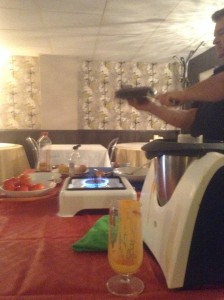¡Hola! Soy Caterina Francisco, escribiendo del cuento de Mariam!
Hello! I am Caterina Francisco, writing from Mariam’s account!
Alrededor de la costa del sur de España, hay tres ciudades más importantes que empezaron la historia de España. Hoy visitamos las tres ciudades, cuales son Vejer de la Frontera, Bolonia y Tarifa. Vejer de la Frontera es una ciudad muy conocida por su color blanco en casi todas de los edificios y casas. Mi primera impresión fue que esta ciudad es muy tranquila porque cuando llegamos había casi nadie en las calles.
The history of Spain is said to have been started by the settlement within three main cities, which line the southern coast of Spain. Today we visited those three cities which are Vejer de la Frontera, Bolonia and Tarifa. Vejer de la Frontera is a city very well known for the white painted style of buildings and homes. My first impression of this city is that it is very quiet, because when we arrived there was hardly anyone outside in the streets.
Tuve que presentar para mi grupo sobre un poco de información sobre las ciudades: Vejer, Bolonia and Tarifa- la ciudad más al sur del país. Vejer de la Frontera está ubicada a la derecha del rio Bárbate, en una colina y es conocida por su pueblo que es casi totalmente blanco. Salimos está mañana a las ocho y media por autobús para ir a Vejer. Cuando llegamos en Vejer, saludamos a nuestra guía. Ella fue muy simpática y sabía mucha información sobre la ciudad y lo que ha ocurrido allí. Caminamos mucho tiempo adentro de la ciudad por las calles principales. Saque muchas fotos de las vistas y de las casas blancas. Fue maravillosa de ver como la gente de esta ciudad son muy amables y si necesite ayuda, ellos se asisten inmediatamente. Lo que fue especial para ver fue las calles y los edificios. Las calles son tan estrechas y algunos tuvieron que ser reconstruidas después del terremoto que ocurrió en Portugal en 1755. Es muy interesante para mi cuando puedo aprender y conectar algo que ya sabía de mis origines o de mis estudios portugueses a algo que ocurrió en el mundo hispano.
While visiting these cities for the day, I presented to my group some interesting information on Vejer, Bolonia and Tarfia, the southern most city in Spain. Vejer is located on the right of the Barbate River, on a hill and is known for its town dressed in white. We left this morning from Cádiz at 8:30 in the morning by bus in order to go to Vejer. Taking the bus was a great way to really see some of the countryside of Andalucía. When we arrived in Vejer, we greeted our tour guide. She was very nice and knew so much about the city and what has happened there. We walked a while inside the city through some of the main streets. I took many photos of the views and of the white houses. It was marvelous to see how nice the people were, and if you need help, they can assist right away. The buildings and streets were very interesting to see. They were narrow and some of the buildings had to be reconstructed after the after-effects of the earthquake that hit Portugal in 1755. It is very interesting to me when I can learn and connect something to my heritage or my Portuguese studies to the Hispanic world.
Después de visitar Vejer, fuimos a la ciudad Bolonia y visitamos Baelo Claudia, las ruinas romanas. Visitamos el museo que mayormente fue afuera de un edificio. Baleo Claudia fue abandonada en el siglo VI, donde tenía mucho terremotos. Me gustó mucho de ver las ruinas y pienso que es muy importante para una persona como yo de entender una civilización antigua para entender como llegamos a nuestro tiempo de hoy. Después de ver las ruinas, fuimos a la ciudad de Tarifa. Había mucho calor hoy, pero todavía podíamos disfrutar la playa y las tiendas. Después de caminar por la ciudad un poco, fuimos a mojar nuestros pies en el agua. El agua del mar mediterráneo fue tan frio que solamente podía poner mis pies. La vista de África en la distancia fue increíble. Nunca he imaginado que alguna día yo visitaría un lugar como Tarifa y definitivamente quiero volver algún día. Me siento muy tranquila aquí en Tarifa, es como el mar da el mejor equilibrio con el calor de la ciudad.
After visiting Vejer, we went to the city of Bolonia, where we visited Baelo Claudia, the Roman ruins. We visited the museum that is actually entirely outside. Baelo Claudia was abandoned in the 6th Century, after a serious of earthquakes occurred. I liked seeing the ruins a lot and I think it is very important to understand ancient civilizations in order to understand how we arrived to where we are today. After seeing the ruins, we went to the city of Tarifa. It was so hot today, but we could still enjoy the beach and the stores. After walking through the city for a little while, we went to wet our feet in the water. The water was so cold in the Mediterranean Sea that I could barely stand to put my feet in! The view of Africa in the distance was incredible. I would have never imagined that one day I would visit a place like Tarifa and I definitely want to come back. I feel very peaceful in Tarifa, it is like the ocean gives a great balance to the heat from the city.

The iconic pueblo blanco (white town) copied by many other cities

The many archways throughout the city of Vejer
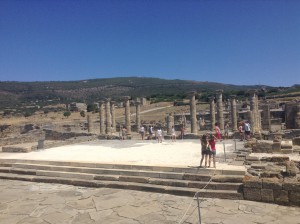
Ancient town market of what once was Baelo Claudia
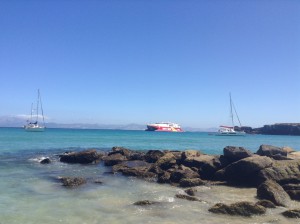
The water was freezing! But at least is came with a great view of Africa!


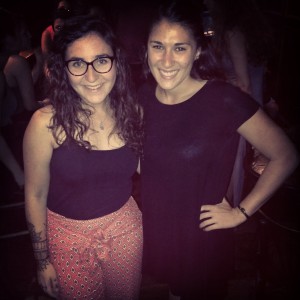

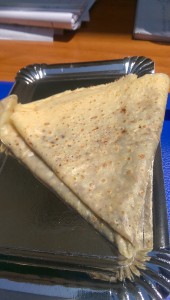 been craving a crepe and I’m proud to say that I finally got one. Before today, just 3 days before I leave, I had just never been in the right place at the right time with the right about of money, but oh was today different. I also acquired this morsel in the eating area of the Cadiz Mercado. Seriously, no regrets.
been craving a crepe and I’m proud to say that I finally got one. Before today, just 3 days before I leave, I had just never been in the right place at the right time with the right about of money, but oh was today different. I also acquired this morsel in the eating area of the Cadiz Mercado. Seriously, no regrets.


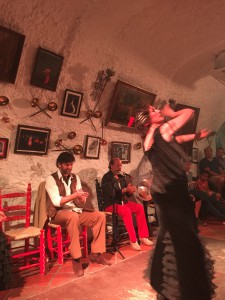
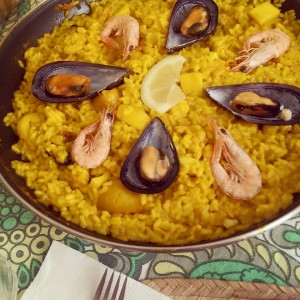
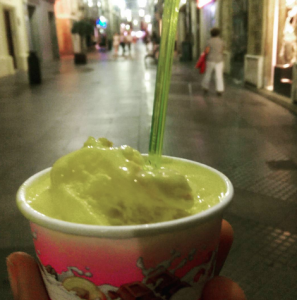 is the great person you are sharing the experience with. Really, the food goes with your conversation, the conversation doesn’t go with your meal.
is the great person you are sharing the experience with. Really, the food goes with your conversation, the conversation doesn’t go with your meal.

